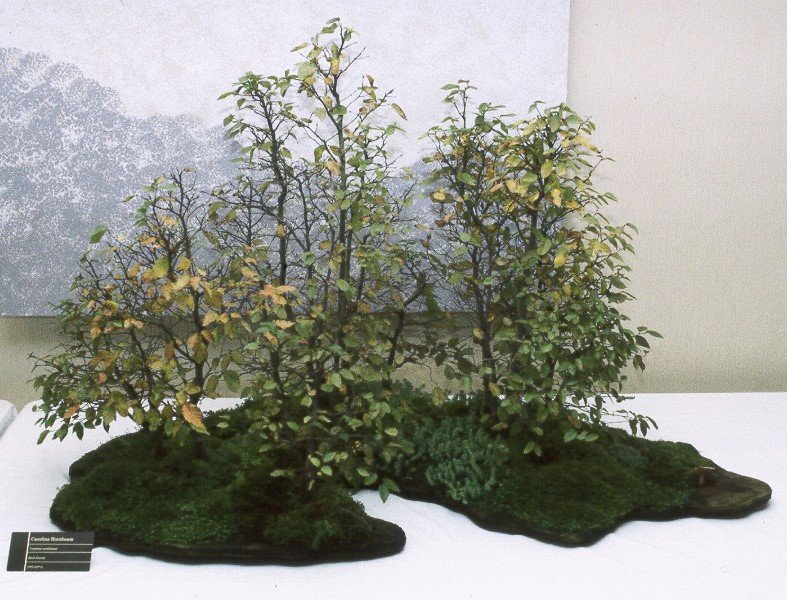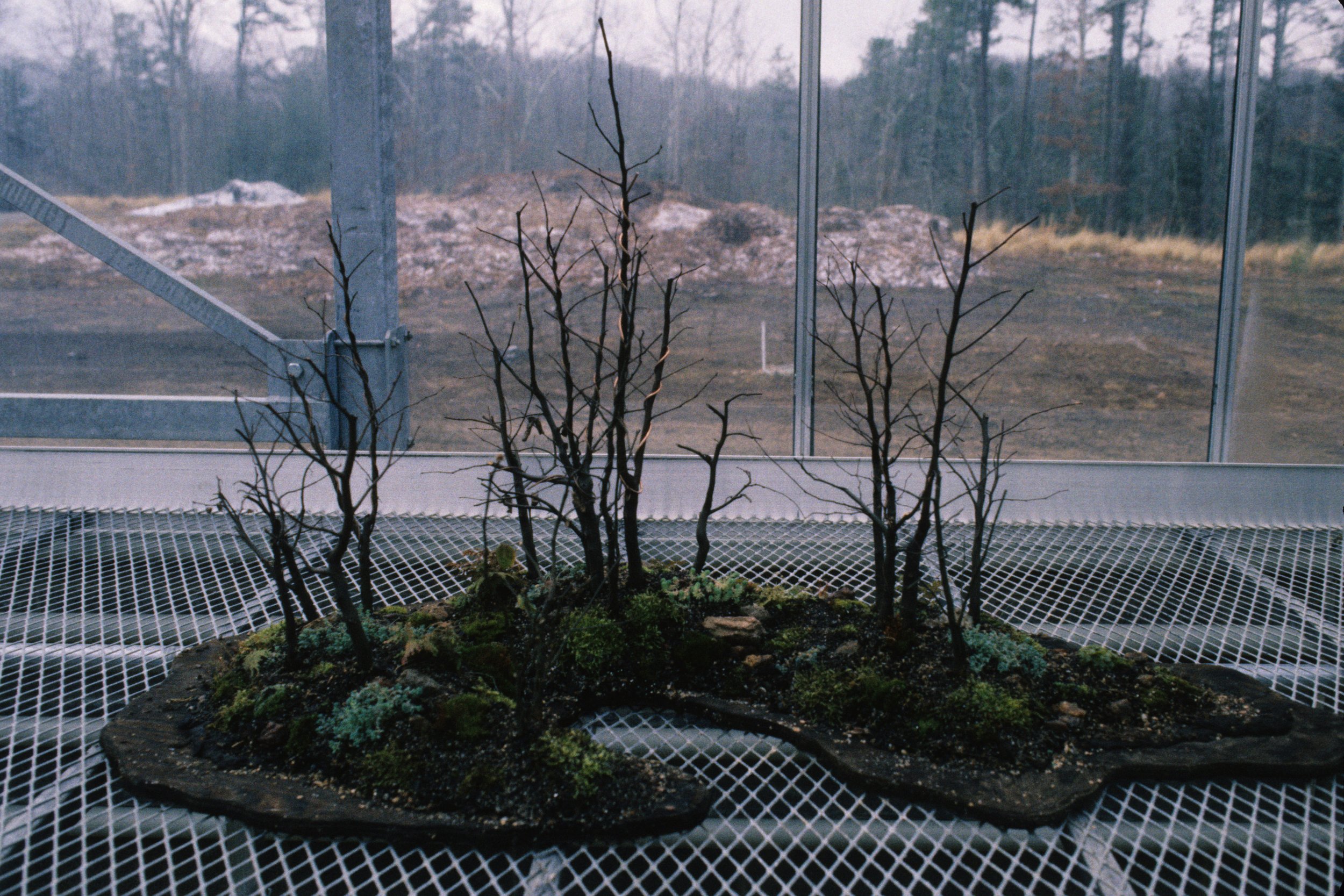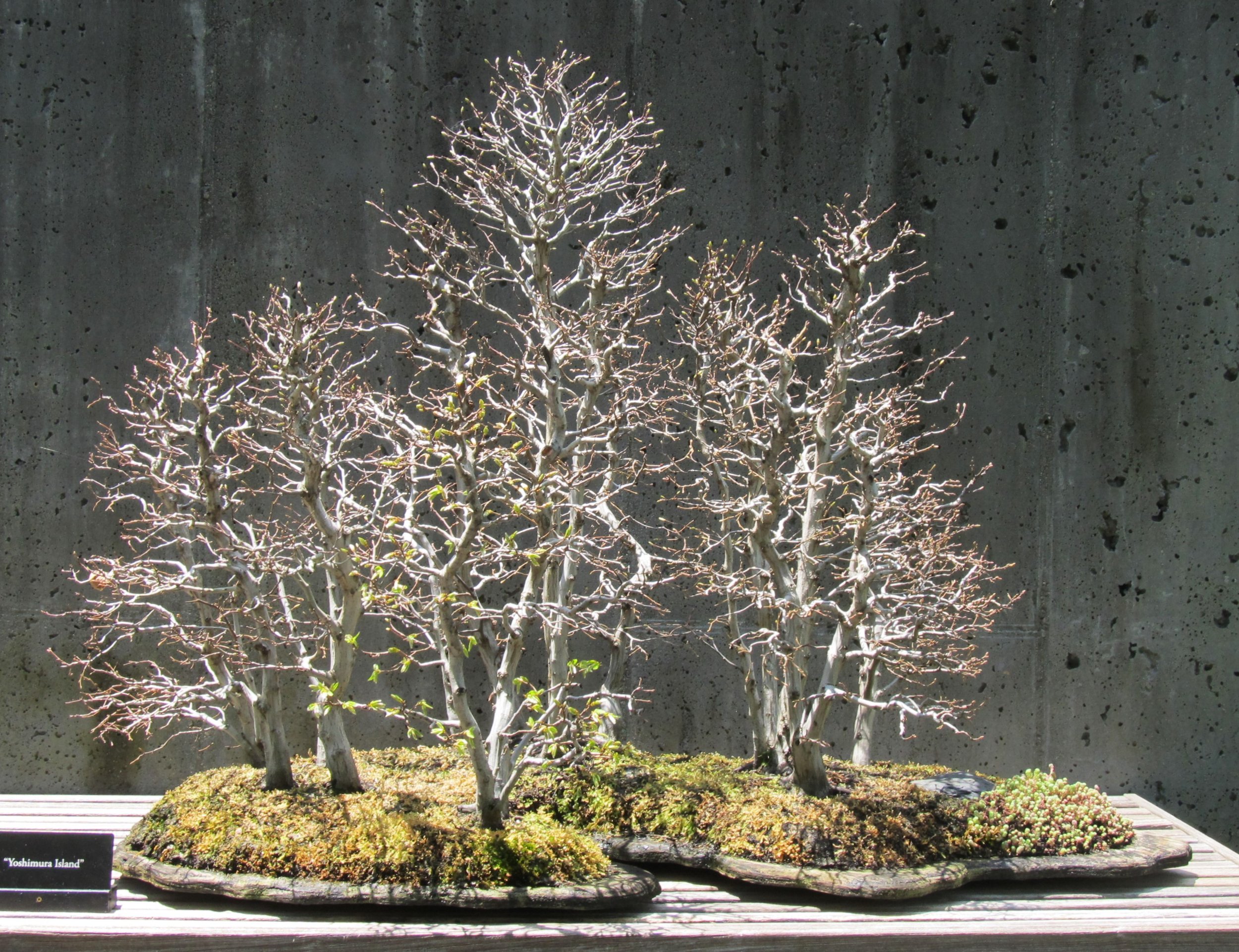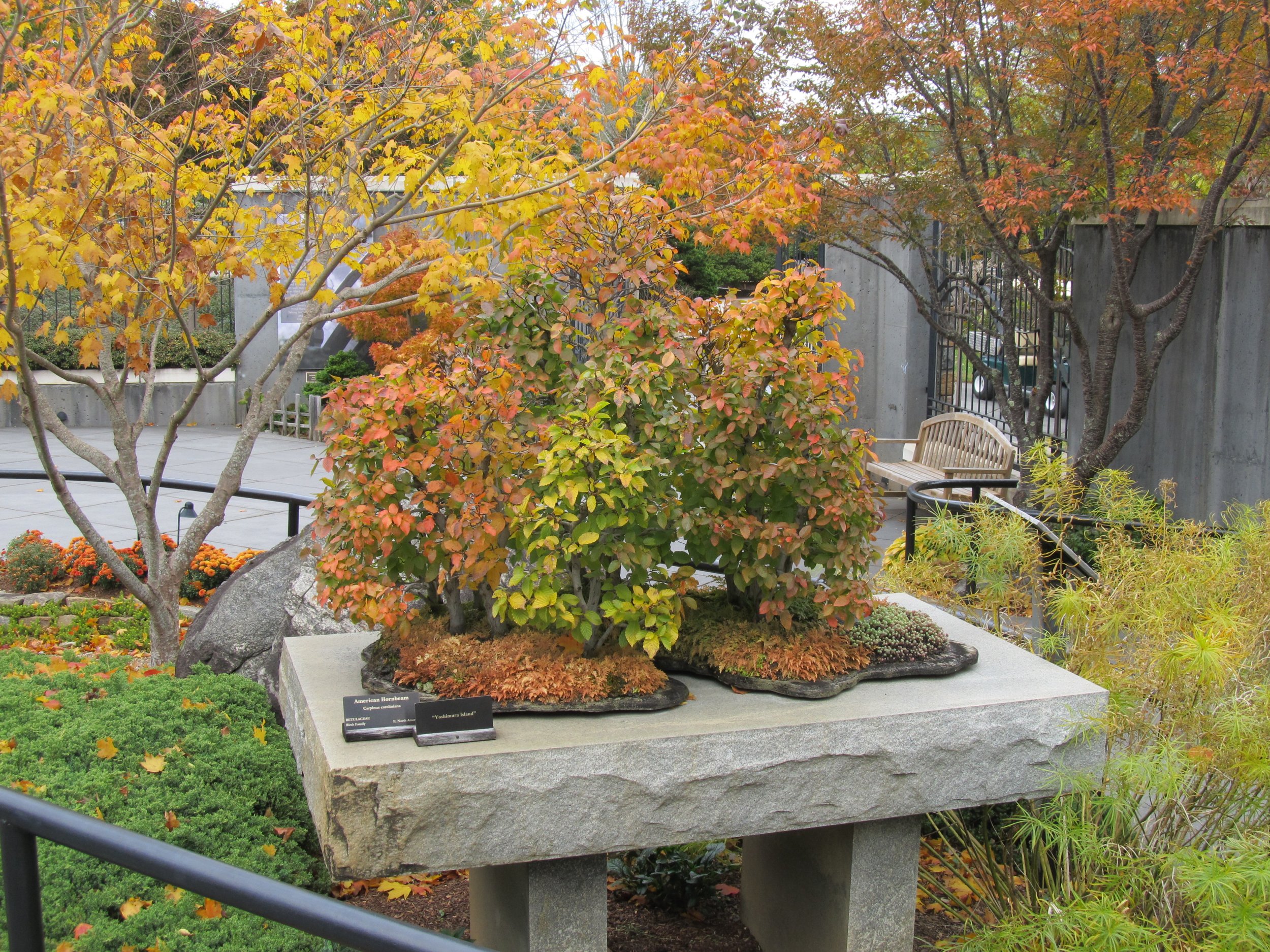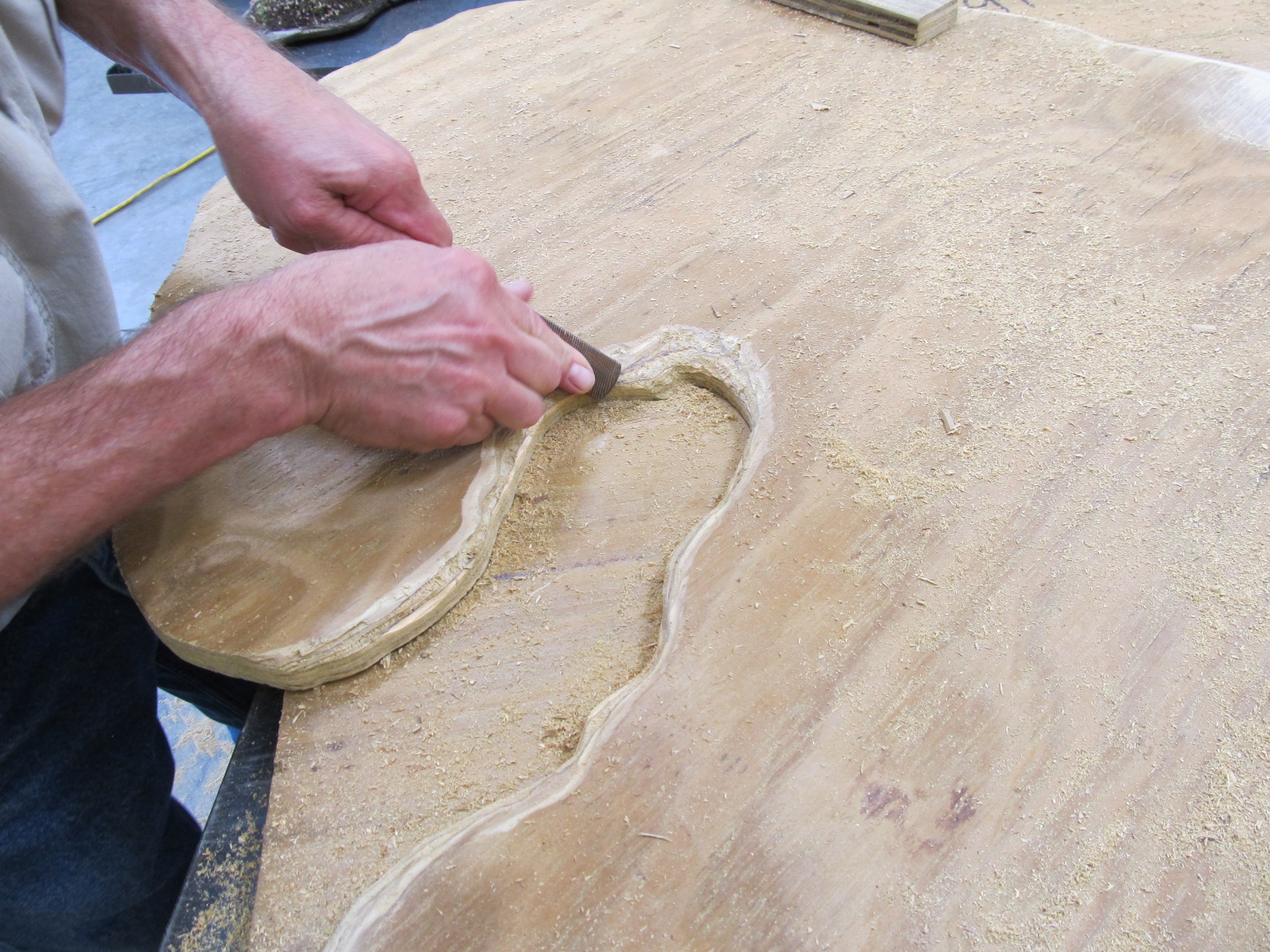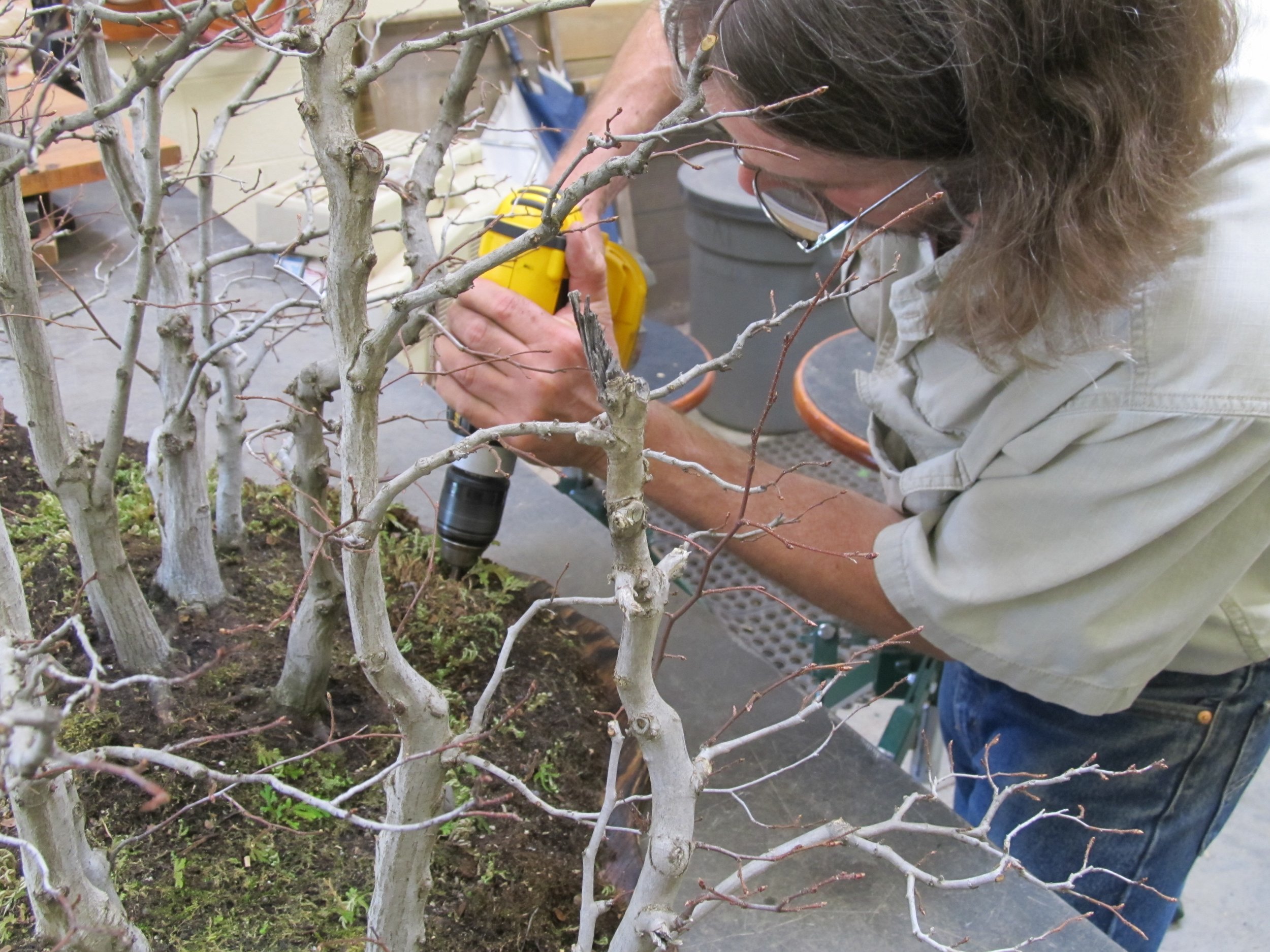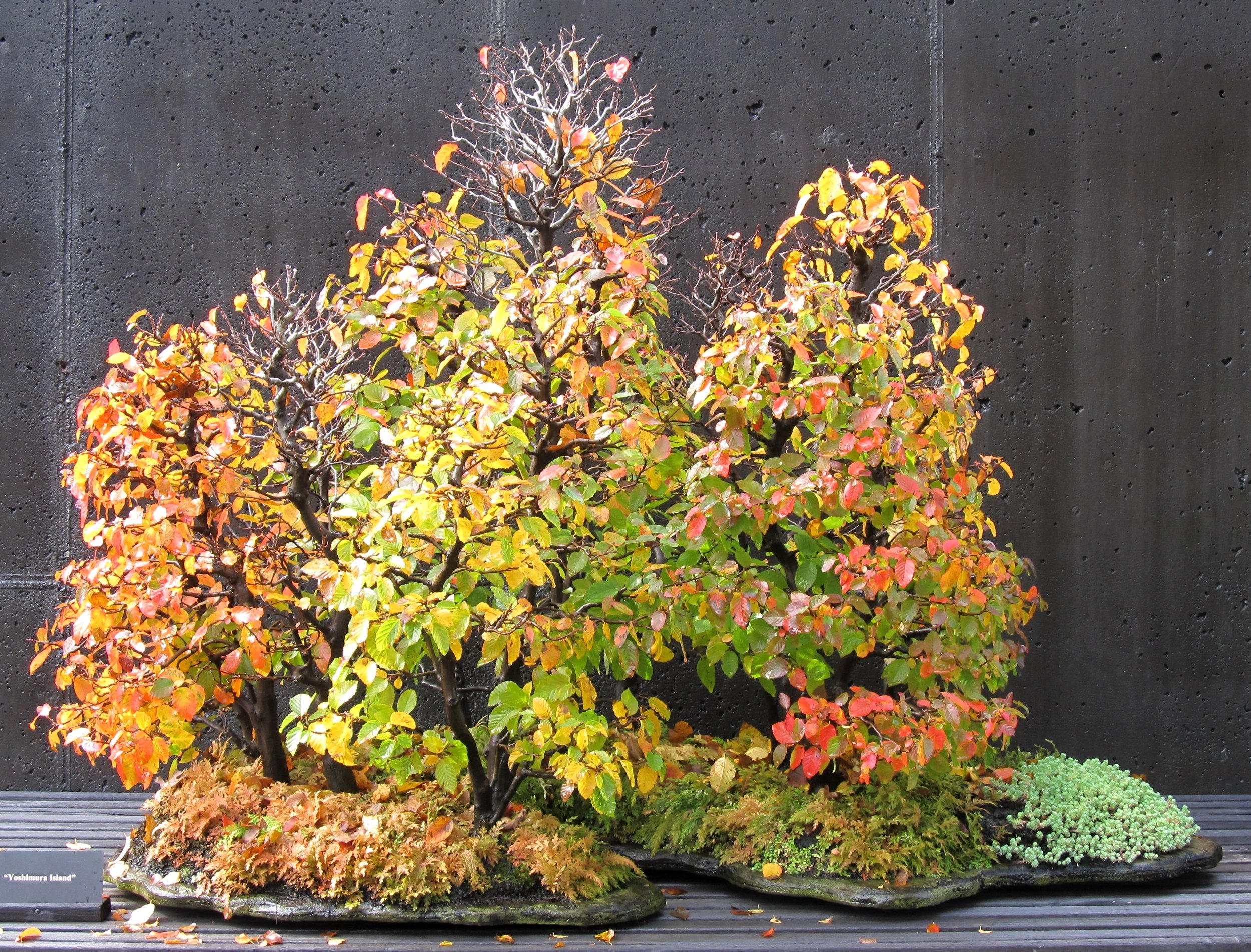Yoshimura Island
When talking with visitors in the garden, I am often asked if I have a favorite bonsai in the collection. I always reply that I don't have a favorite because I'm responsible for making them all as good as possible, so each specimen gets its turn in the spotlight and each gets to be "favorite" for a while. That answer is true enough. It is also intentionally evasive. I would rather have guests to the garden look through the displays and choose their own favorite, as they very often do. However, if someone were to be adamant about my choosing a favorite bonsai, perhaps threatening physical violence if I didn't tell them, I could easily point to the tray landscape we call "Yoshimura Island" and not feel like I was being untruthful.
"Yoshimura Island" is pretty much always on display when we have bonsai in the garden. It has been displayed there every year since the garden opened in 2005. It was displayed frequently prior to the existence of the garden, as well, at the annual Carolina Bonsai Expo. In fact, it was the logo tree for the very first Expo in 1996, when the planting was only a year old. That logo (which, unfortunately, no longer exists) was based on this line drawing made the same year:
This blurry photograph shows "Yoshimura Island" on display at the 1998 Expo:
The "Yoshimura Island" planting consists of sixteen American hornbeams (Carpinus caroliniana) that were grown from seed at the Arboretum in the early 1990s. The arrangement was composed by Japanese-American bonsai artist Yuji Yoshimura in 1995. The hornbeams were very young plants at the time and all the same age, and that presented a challenge for making a good group planting. Ideally, you will have a wide range of sizes in the trees used to compose such a group, including one tree that is noticeably more substantial than all the rest. This larger tree is used as the main, or number one, tree in the grouping. It serves as the focal point around which the rest of the composition is built. It is also typically desirable to have some trees that are noticeably smaller than the others, employed to represent younger trees or trees farther off in the conceptual distance. The hornbeams I presented to Mr. Yoshimura varied a little bit in size but not nearly as much as would have been optimally desirable.
I did not know this fundamental principle of group planting arrangements at the time. Mr. Yoshimura pointed it out to me, then proceeded without fuss to use the material he was presented with. He overcame the obstacle of uniformity in the plant material through pruning and clever placement. His strategy was testimony to his artistry and mastery of his medium.
January, 1995
Mr. Yoshimura began by organizing three groupings of trees, placing the largest of them in the center of his composition. He took the tallest tree available, left it as tall as possible and made it his number one tree. All the other trees were shortened in accordance to the height of the main tree. This gave him a variety of heights, but the trunks of these young trees were all similarly slender. To deal with this dilemma, Mr. Yoshimura created a size differential between the three groups of trees by manipulating the number of trees in each group and the degree to which they were spaced from each other. The main cluster of trees, including the tallest, was comprised of five members spaced more openly. The secondary grouping was situated to the right of the main one and also consisted of five trees, including the second tallest, but were spaced more closely together. The tertiary grouping with the third tallest tree numbered four trees in total and was placed to the left of the main grouping. Then, in a completely unorthodox move, he took two of the smallest trees available and placed them directly in front of the main grouping. One of these two was a twin-trunk tree. This small cluster of trees in effect formed a visual mass that partially screened the view of the main tree. The lower portion of the main tree, that part lacking the desired girth, was thus hidden while the top portion protruded above the entire grove. The placement of this screening group of short trees took advantage of the shape of the slab on which the composition was planted.
My guess is that very few of the many people who have admired "Yoshimura Island" over the past three decades have taken note of the ingenious composition. In truth, I did not fully appreciate it myself until I learned more about bonsai than I knew at the time the planting was created. What Mr. Yoshimura had done with the arrangement of this planting and why he did it was something I discovered only after years of looking at it and thinking about it.
“Yoshimura Island” on display in the brand-new Bonsai Exhibition Garden, May, 1996
There was something else I only belatedly discovered: One of the hornbeams in the group is not American. One of those smaller trees that form the screen in front of the main grouping of trees — it is the twin-trunk tree — is a Japanese hornbeam (Carpinus japonica). I can say with near certainty that I didn't bring that tree with me from the Arboretum. I think that tree came from Mr. Yoshimura and he slipped it in there. He might have done this because he wanted a particular look for that tree, being up front and prominent as it is, and none of the twenty-something American hornbeams I brought had the right character. Or, it might have been that he was playing another of his little jokes. Japanese and American hornbeam are fairly similar in appearance and most folks wouldn't know the difference. But Mr. Yoshimura would have known the difference, you can be certain of that.
May, 2019. Note the one tree in the front that has already begun pushing out new leaves.
“Yoshimura Island” on display in the Bonsai Exhibition Garden, October 2018. Note the one tree in front that has different colored autumn foliage.
The feature of "Yoshimura Island" that has been most frequently noticed and commented upon is the slab of plywood on which it is planted. People want to know what the slab is made of, then marvel when they learn it is plywood. It hasn't happened in a long time, but early on several different bonsai friends made sincere offers to pay for a similarly-shaped slab of some other material. These people liked the planting very much but thought poorly of the plywood slab. I wasn't keen on the plywood either at first. Now I wouldn't even consider having this unique composition on anything other than plywood. It is a key component of the character and identity of the piece.
While Mr. Yoshimura was creating the tray landscape that now bears his name, he explained to me how he had fashioned the slab. He used marine plywood, which is manufactured for use in wet situations. Then he burnished it with a torch and treated it with a copper-based preservative, just to make certain it would hold up. "This slab will last for ten years, then it will need to be replaced," he told me. "But that will be your problem because by then I will be dead!" Whether that was intended as a joke or prophesy, I cannot say. It turned out to be half correct, in any event. By 2005, ten years after the planting was made, Mr. Yoshimura was long gone, but the slab he made was still in good order. It wasn't until 2013, after eighteen years of service, that the plywood became mushy around the edges and needed to be replaced. I called my longtime friend and sometime assistant, Charlie Dunnagan, to help me with the project. The following pictures illustrate the process we employed to replicate Mr. Yoshimura's plywood slab:
1) We used 1-inch pressure-treated plywood to make the new slab. The outline of the old slab's shape was drawn on the new sheet of plywood by tracing the contours and adding about an inch all around:
2) The shape was cut out using a sabre saw:
3) It looked like a big jigsaw puzzle:
4) The edges of the slab's outline were rounded off, first by use of a die grinder with a router bit and then by hand with a wood rasp:
5) The cut-out shape with edges rounded off was taken outside in preparation of burnishing with a propane torch (charring wood is a very old but effective method of preserving it):
6) The burnishing highlighted the grain pattern of the wood, producing a tiger-stripe effect, which was an unanticipated but welcomed development:
7) Drainage holes were drilled in the slab, and it was ready to receive the planting
8) The roots of the hornbeams had attached themselves firmly to the decaying wood of the old slab and had to be pried off using a spade:
9) I had done root pruning on this planting two years prior, so decided to expedite the transplanting work by leaving the root mass undisturbed and moving it entire from the old slab to the new:
10) To keep the root mass in place we screwed it to the slab, using decking screws:
11) Here is the planting successfully transferred to the new slab, sitting on a cart with the old slab posing alongside:
12) A detail of the tip of the island, showing the black & brown grain pattern of the new slab:
The "new" plywood slab is now going on eleven years old and is holding up well. It has darkened with age and weathering and has acquired a nicely organic appearance. There is no telling if it will last as long as its predecessor, but the day will eventually come when the current slab needs replacement. If I'm still around then, you can bet "Yoshimura Island" will go back on a piece of plywood!
For your viewing pleasure, a selection of images showing “Yoshimura Island” in different seasons over the years (click on any image for full view):


